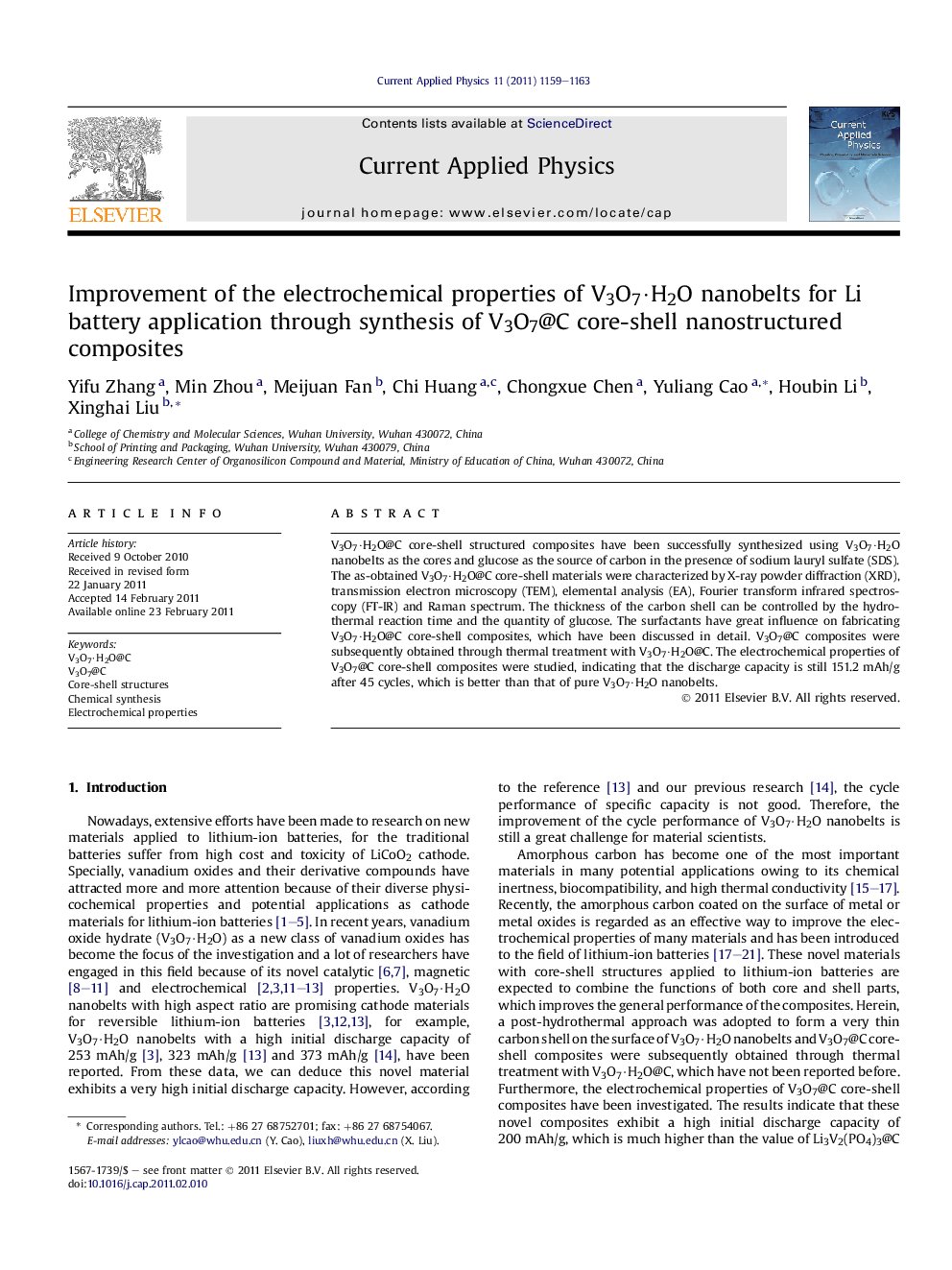| Article ID | Journal | Published Year | Pages | File Type |
|---|---|---|---|---|
| 1787462 | Current Applied Physics | 2011 | 5 Pages |
V3O7·H2O@C core-shell structured composites have been successfully synthesized using V3O7·H2O nanobelts as the cores and glucose as the source of carbon in the presence of sodium lauryl sulfate (SDS). The as-obtained V3O7·H2O@C core-shell materials were characterized by X-ray powder diffraction (XRD), transmission electron microscopy (TEM), elemental analysis (EA), Fourier transform infrared spectroscopy (FT-IR) and Raman spectrum. The thickness of the carbon shell can be controlled by the hydrothermal reaction time and the quantity of glucose. The surfactants have great influence on fabricating V3O7·H2O@C core-shell composites, which have been discussed in detail. V3O7@C composites were subsequently obtained through thermal treatment with V3O7·H2O@C. The electrochemical properties of V3O7@C core-shell composites were studied, indicating that the discharge capacity is still 151.2 mAh/g after 45 cycles, which is better than that of pure V3O7·H2O nanobelts.
► A novel V3O7·H2O@C core-shell structured composite has been successfully synthesized. ► The surfactants played a significant role in controlling the thickness of the amorphous carbon coated on the surface of V3O7·H2O nanobelts. ► The discharge capacity of V3O7@C is still 151.2 mAh/g after 45 cycles. ► The electrochemical properties of V3O7·H2O nanobelts have been greatly improved by coating a thin carbon layer on their surface.
